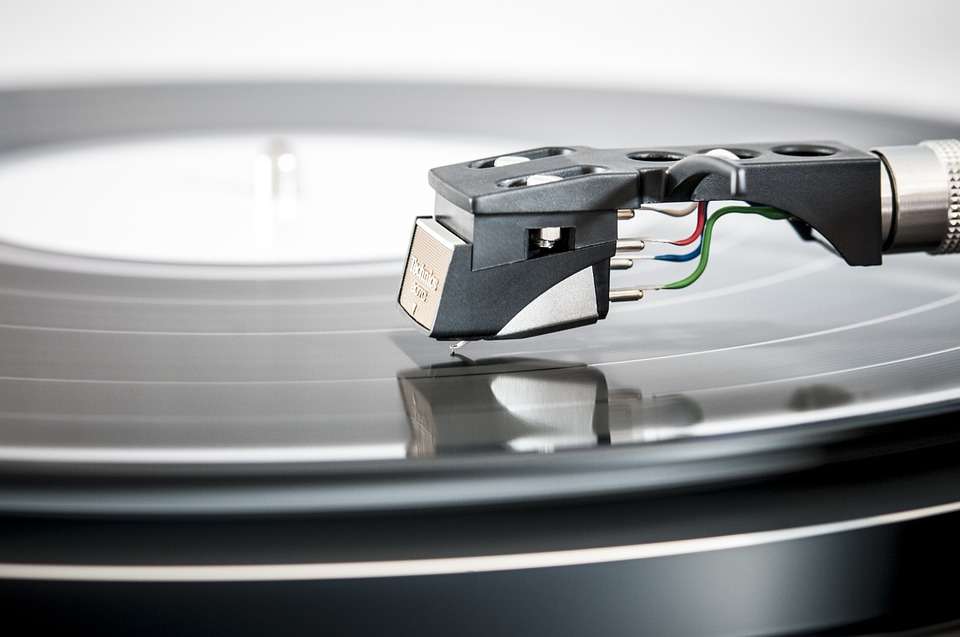
From Edison and Berliner to the present day. Technical aspects of the turntable.
See Turntables in the Muzyczny.pl store
 In this part of our series, we will look at the technical aspects of the turntable, its most important elements and the specificity influencing the analog sound of vinyl records.
In this part of our series, we will look at the technical aspects of the turntable, its most important elements and the specificity influencing the analog sound of vinyl records.
Characteristics of gramophone needles
In order for the needle to sit well in the groove of the vinyl record, it must have the appropriate size and shape. Due to the shape of the needle tip, we divide them into: spherical, elliptical and shibaty or fine line needles. Spherical needles end with a blade whose profile has the shape of a segment of a circle. These types of needles are appreciated by DJs because they stick well to the groove of the record. Their disadvantage, however, is that the shape of the needle causes high mechanical stress in the grooves, and this translates into poor quality reproduction of large frequency jumps. Elliptical needles, on the other hand, have an ellipse-shaped tip so that they sit deeper in the groove of the record. This causes less mechanical stress and thus less damage to the plate groove. The needles of this cut are also characterized by a wider band of reproduced frequencies. The shibata and fine line needles have a specially profiled shape, which is designed to further match them to the shape of the record’s groove. These needles are most dedicated to home turntable users.
Characteristics of a phono cartridge
From the technical point of view, the stylus transfers vibrations to the so-called a phono cartridge, which in turn converts them into pulses of electric current. We can distinguish several most popular types of inserts: piezoelectric, electromagnetic (MM), magnetoelectric (MC). The former piezoelectric devices are not used anymore and MM and MC inserts are commonly used. In MM cartridges, the vibrations of the stylus are transferred to magnets that vibrate inside the coils. In these coils, a weak electric current is generated by the vibrations.
MC inserts operate in such a way that the coils vibrate on the stationary magnets set in motion by the needle. Often in amplifiers with a phono input, we can find MC to MM switches, which are used to operate the appropriate type of cartridge. The MC cartridges in relation to the MM are better in terms of sound quality, but at the same time they are more demanding when it comes to the phono preamplifier.
Mechanical limitations
It should be borne in mind that the turntable is a mechanical player and is subject to such mechanical limitations. Already during the production of vinyl records, the musical material undergoes a special treatment that reduces the rise time of signals. Without this treatment, the needle would not keep up with too large jumps in frequency. Of course, everything must be properly balanced, because recordings with too much compression in the mastering process will not sound well on vinyl. The stylus blade that cuts the mother board also has its own mechanical limitations. If a recording contains too many wide frequencies with high amplitude, it will not work well on a vinyl record. The solution is to partially attenuate them through gentle frequency filtration.
Dynamika
The turntable spin speed is fixed at 33⅓ or 45 revolutions per minute. Thus, the speed of the needle relative to the groove varies depending on whether the needle is at the start of the plate closer to the edge or at the end of the plate closer to the center. Near the edge, the speed is highest, around 0,5 meters per second, and 0,25 meters per second near the center. At the edge of the plate, the needle moves twice as fast as at the center. Since dynamics and frequency response depend on this speed, producers of analog records placed more dynamic tracks at the beginning of the album, and calmer ones towards the end.
Vinyl bass
Here a lot depends on what system we are dealing with. For a mono signal, the needle only moves horizontally. In the case of a stereo signal, the needle also begins to move vertically because the left and right grooves differ in shape, as a result of which the needle is once pushed upwards and once deeper into the groove. Despite the use of RIAA compression, low frequencies still cause quite large deflections of the stylus.
Summation
As you can see, there is no shortage of limitations in recording music on a vinyl record. They make it necessary to edit and process the material before saving it on a black disc. You can find out about the difference of sound by listening to the same disc on vinyl and on a CD. The gramophone technique has many limitations due to its mechanical nature. Paradoxically, despite these limitations, in most cases the vinyl version of recordings is more pleasant to listen to than its digital counterpart recorded on CDs. This is probably where the magic of analog sound comes from.





